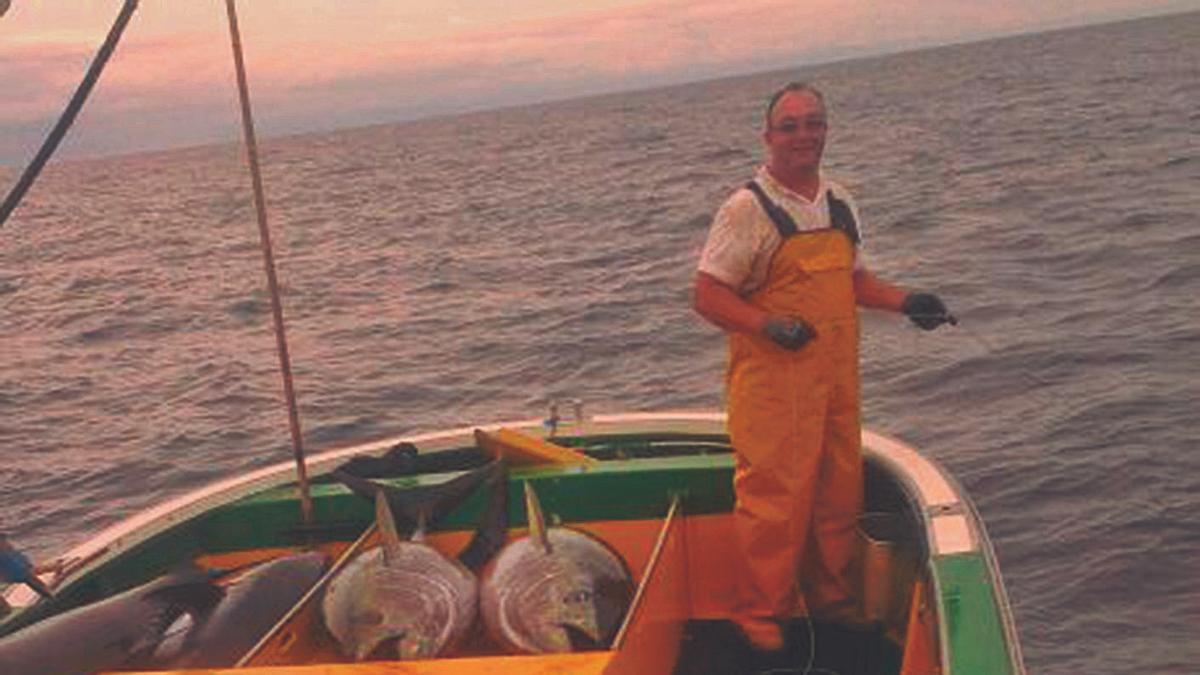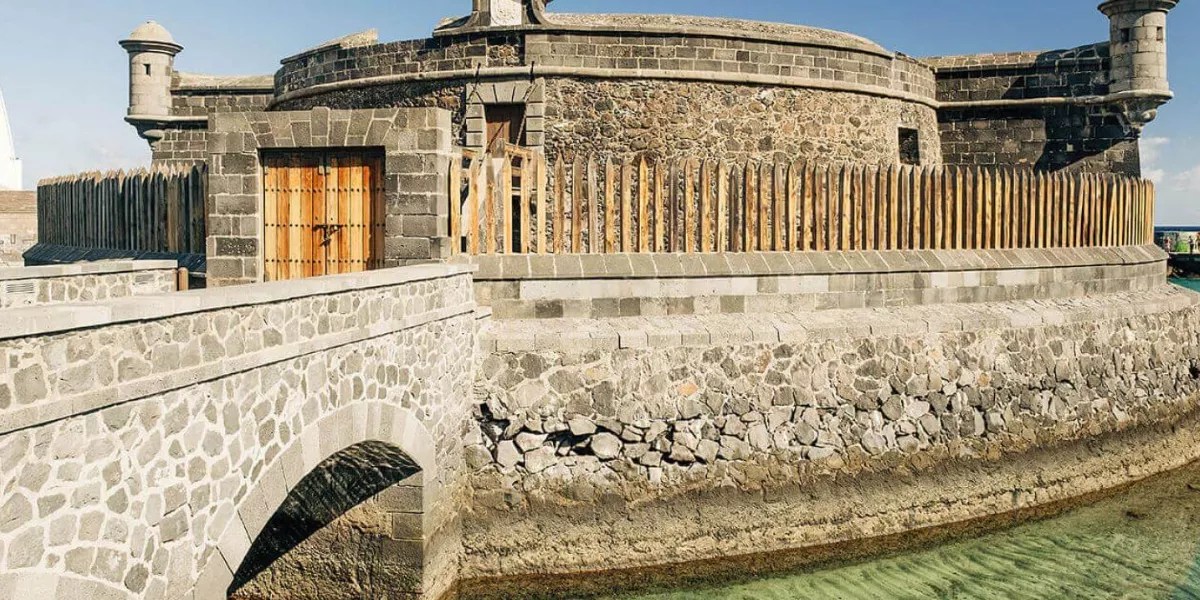
Manuel Díaz, Senior Patron of the Cofradía de Las Mercedes, in Los Cristianos, the one with the most tuna vessels on the Island and in the Canary Islands, about 20, draws the reality of a sector of “hard” work, which is increasingly “less compensated “And whose future is marked by” quotas that do not allow us to move forward. ”
The future outlook in the short, medium and long term for the tuna fleet of Tenerife and Canary Islands –About 250 ships– it appears “very black.” This is how Manuel Díaz, Senior Patron of the Nuestra Señora de Las Mercedes de Los Cristianos Fishermen’s Association assesses it. Díaz establishes that the current tuna harvest (season), about to end, “is the worst in history.” But it is that those of 2018, 2019 and 2020 were already bad, this last year, in addition, of pandemic and its consequences.
Precisely, the Covid-19 It has affected and affects “fish sales, which have dropped a lot,” says Díaz, who adds: “We export the vast majority of the product to the Peninsula, only 5% stays here ». This is assured by the leader of the Brotherhood with more tuna boats from the Island and the Canary Islands, about 20, out of a total fleet of 57 boats and 300 direct workers. Of these, Manuel has two with a concept “family because my children are among the twelve workers, almost all members of the family.”
A serious fishing problem on the Island is the lack of generational change. In this regard, the Senior Employer sentence: «That is not possible while this hard work does not have the compensation and profitability to be able to earn a living. In fact, I have a 25-year-old son with me because he lost his job. He’s into fishing, like most young people, because he doesn’t have anything else at the moment.
The harvest.
Regarding the 2021 campaign, this year’s tuna harvest, he values it as “the worst in history.” He explains: «It started in January and is about to end; probably next week, according to catches. First, chronologically, it is that of the northern barrel or bonito (Thunnus alalunga), also known as albacore tuna. It’s over. Then, for a month or month and a half, it is the turn of the bluefin tuna (Thunnus thynnus) where the Canary Islands quota of catches is very low. An example: in 2018 there were 255 tons, harvested in just one week. Finally, the prickly pear species (Thunnus obesus or bigeye), bigeye. Díaz believes that “next week the season will end.”
Artisan fleet.
The Canarian fishing fleet, and therefore, of Tenerife, is practically entirely artisanal. Díaz expresses it graphically: “One man, one hook.” The day begins “very early” and ends with sunlight, but, he notes, “sometimes we are 24 hours when we started looking for the bait for the fishing itself ». Regarding the places where tuna is fished, he emphasizes: “It depends, although always in Canarian waters, except for the exception of some colleagues who go to Madeira because they have a license from Portugal.” One of the keys to the eternal crisis in the sector is the quotas, how much can be caught. Díaz values: “If they do not open their hand in the quotas, the fleet is on the way to scrapping because the base of 80% is tuna fishing.” He argues: «In all of Spain there are 9,000 tons this year and 2,600 for the Canary Islands. Ideally, 4,000 and up. Here, in addition, you can fish all year round, although the best time is in January, because the sea temperature is perfect for the fish, 22 or 23 degrees. But this quota is by tons and not by periods of time. Manuel Díaz appreciates the help of the Cabildo to the eleven brotherhoods of the island. He emphasizes: «We are going to receive a grant of 15,800 euros for each one compared to 20,000 last year. It has fallen due to the pandemic, but it is a help that we appreciate.
Institutional support.
The plenary session of Council Last March, it approved an institutional motion to “request the Government of Spain an increase in the quota for bigeye tuna (Thunnus obesus)” and the Ministry of Agriculture, Fisheries and Food “to maintain the prohibition of the art of seine in the waters of the Archipelago.” The text claims to reach 3,600 tons for the Canary Islands compared to the 2,421 assigned by the General Secretariat of Fisheries and proposes to follow a criterion of annual discharges contrasted by scientific institutions. This request for an increase is based on the fact that the criteria for assigning fishing opportunities between fleets are the historical catches of bigeye landed in the 2014-2018 period. According to the approved motion, using this time series, of only five years, “has seriously harmed the interests of professional Canarian fishermen.” Likewise, the document indicates that “the criteria indicated by the regulations, both to reduce the capture of juveniles, and to give preference to small-scale, artisanal and coastal fishing, do not seem to have been taken into account since the fishing of bigeye in Canarias is made exclusively with cane ». He adds that “the specimens are captured one by one, which guarantees the almost non-existence of juveniles.” The insular councilor of the primary sector, Javier Parrilla, rapporteur of the motion, values: “At this time of economic uncertainty we must protect and defend professionals.” Looking ahead to 2022, when a new distribution is established “it is necessary to recognize the use of ancestral sustainable fishing methods of the island fleet to expand the fishing opportunities for bigeye tuna (prickly pear)”.
Grant.
Counselor Parrilla announced last day 5 aid to the fishing sector amounting to 158,000 euros. The grants are intended to finance the running costs of the brotherhoods. The sector maintains more than 200 vessels operating on the island, with some 650 people working directly; indirectly, many more through companies and related sectors such as points of sale and restaurants, distribution, fishing tourism or sale of consumables ”.
Parrilla values that the survival of the brotherhoods “guarantees the origin of the fishing, as well as its legality through the essential identification of the caught fish using labels.” The fishing sector in Tenerife once again launches an alert message, an SOS. It deserves a response from the institutions.















